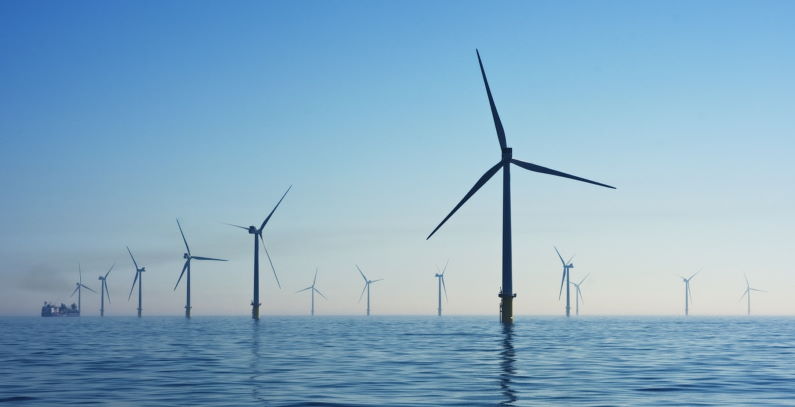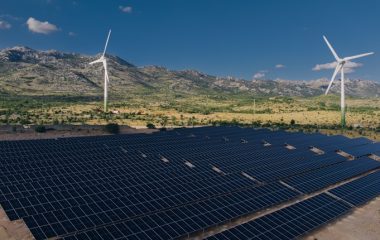
Photo: Unsplash
The allocation of funds for renewable energy from January to June outperformed data from most economic reports in the world, which can largely be attributed to offshore wind power. The sum of investment decisions in the subsector jumped 319% to USD 35 billion on an annual basis, topping the result from entire last year.
The effect of the coronavirus and the measures to contain the pandemic have crippled the economy worldwide, but investment in renewable energy production capacity showed great resilience, according to data that BloombergNEF (BNEF) compiled. The overall volume without hydroelectric facilities over 50 MW came in at USD 132.4 billion for the first half of the year. It is 5% more in rounded terms than the revised figure for the same period of 2019 and offshore wind power have been dominant.
Onshore wind investment slipped 21% to USD 37.5 billion and solar fell 12% to USD 54.7 billion. Conversely, the offshore wind power sector spiked 319% to USD 35 billion.
Geothermal energy jumped a stunning 594%, but only to USD 676 million. Of note, Turkey, located in the region followed by Balkan Green Energy News, is among the top countries in installed capacity and investment on a global scale.
Deals on 28 sea-based wind farms
Funds allocated for offshore wind power plants already exceeded the result for all last year, when they reached an all-time high, by 9.7%. The report documented deals on 28 sea-based wind farms.
The largest offshore wind farm so far is planned to be built in the Netherlands
It includes the record 1.5 GW planned for the Vattenfall Hollandse Zuid in the Netherlands. The wind power plant will cost USD 3.9 billion.
Next is the 1.1 GW SSE Seagreen, a site off the coast of the United Kingdom. The project is worth USD 3.8 billion. Seventeen installations were announced in China, led by the Guangdong Yudean Yangjiang Yangxi Shapaat of 600 MW, at a cost of USD 1.8 billion.
Cost reduction
“We expected to see COVID-19 affecting renewable energy investment in the first half, via delays in the financing process and to some auction programs. There are signs of that in both solar and onshore wind, but the overall global figure has proved amazingly resilient – thanks to offshore wind,” said Albert Cheung, head of analysis at BNEF.
Offshore wind is benefitting from the 67% reduction in levelized costs achieved since 2012, and to the performance of the latest, giant turbines, according to Tom Harries, the research company’s head of wind analysis. “But the first half of this year also owed a lot to a rush in China to finance and build, in order to take advantage of a feed-in tariff before it expires at the end of 2021. I expect a slowdown in offshore wind investment globally in the second half, with potentially a new spike early next year,” he asserted.
Slump in other renewables
On the flipside, investment in new biomass and waste-to-energy plants fell 34% to USD 3.7 billion. Hydropower projects of less than 50 MW attracted an estimated USD 576 million, down 14%, while the biofuel item landed at USD 250 million, down 82%.
China leads the way with offshore wind projects
Geographically, China was again the largest market with total investments of USD 41.6 billion in the first half, up 42% year on year, and offshore wind power was the biggest factor. Europe followed with USD 36.5 billion, which is a rise of 50%, while the United States dropped 30% to USD 17.8 billion.
Full-year data to be more reliable
Angus McCrone, chief editor at BNEF, said that a clearer picture of the impact of COVID-19 on green energy investment will come with the full-year 2020 figures. “Renewables have been helped by vastly improved competitiveness and by investor appetite for assets offering secure cash flows. However, project developers face the challenge that key people, whether at the permitting, financing or construction stages, can’t meet face-to-face. And buyers of small-scale solar systems are sensitive to changes in consumer confidence,” in his words.
Including corporate-level equity deals, the figure was USD 137 billion in the first half of 2020, up 4% year over year.
In our region, Hidroelectrica from Romania has recently revived the idea for the first offshore wind power plant in the Black Sea.


















Be the first one to comment on this article.